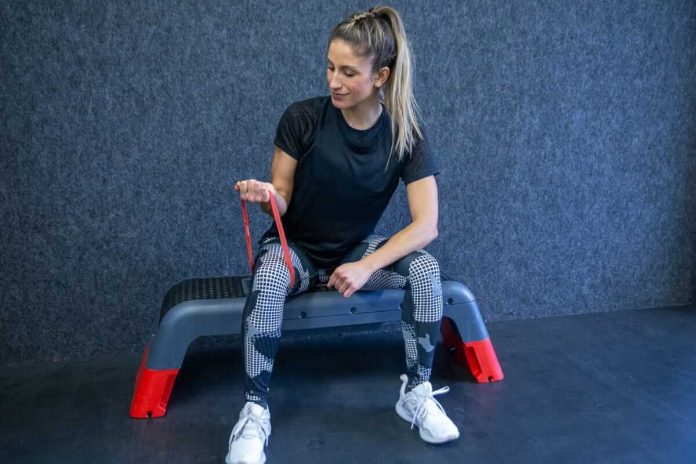The mini resistance band is a small, but extremely mighty exercise tool. These colorful looped bands provide an effective, versatile, and convenient way to amp up your workouts. And though they’re commonly worn around the thighs or ankles as a way to fire up the muscles in your lower body, that’s not their only power. Not by any stretch.
Turns out, you can wear ’em on your arms for upper-body activation in a variety of moves. We found one prime example in an Instagram video that NYC-based celebrity-favorite gym Dogpound posted on Sunday, which shows how the mini band can be used to easily and effectively add upper-body work to the classic sit-up.
What the band does
There are several big perks of adding a mini resistance band to sit-ups in this way. The first: It can actually help improve your form, Andreina Marrero, ACE-certified personal trainer at Dogpound and mastermind behind this move, tells SELF.
Marrero explains it this way: Many people tend to do sit-ups incorrectly by leading the motion with their head first (versus their core) and over-rotating their upper back, which can cause the upper portion of the spine to curve. Performing a sit-up with your arms raised overhead, as this banded move demands, helps you to instead initiate the movement from your core, and then raise your chest, and then raise your arms, and then raise your head, says Marrero.
Another plus: The mini band adds upper-body work to this core-centric move.
Marrero is a “big advocate” of “bringing together multiple body parts to get an efficient workout,” and these banded sit-ups do just that. How? Well, they basically combine two separate movements—a sit-up and a lat exercise—into one. At the top of the movement, after you roll your torso up using your core, you pause and then press your arms against the resistance band to engage your lats, the broadest muscles on each side of your back. The lat activation during this portion of the move is comparable to that of a lat pull-down (though of course the two moves have different ranges of motion), says Marrero.
The fact that the exercise combines two separate moves into one makes it more challenging than a classic sit-up. “It does add a level of difficulty because now you’re working against that force versus having your arms down,” explains Marrero. This added difficulty means you’ll get more strengthening benefits with each rep, which makes this move an extra efficient use of your gym time.


























